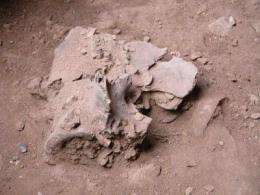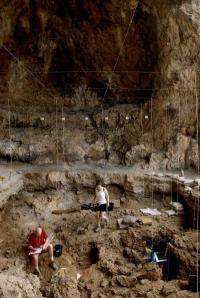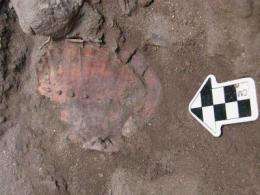First clear evidence of feasting in early humans

Community feasting is one of the most universal and important social behaviors found among humans. Now, scientists have found the earliest clear evidence of organized feasting, from a burial site dated about 12,000 years ago. These remains represent the first archaeological verification that human feasting began before the advent of agriculture.
"Scientists have speculated that feasting began before the Neolithic period, which starts about 11.5 thousand years ago," says Natalie Munro of the University of Connecticut, and author of a research article released yesterday in the Proceedings of the National Academy of Sciences. "This is the first solid evidence that supports the idea that communal feasts were already occurring - perhaps with some frequency - at the beginnings of the transition to agriculture."
At a burial cave in the Galilee region of northern Israel, Munro and her colleague Leore Grosman of Hebrew University in Jerusalem uncovered the remains of at least 71 tortoises and three wild cattle in two specifically crafted hollows, an unusually high density for the period. The tortoise shells and cattle bones exhibited evidence of being cooked and torn apart, indicating that the animals had been butchered for human consumption.
Each of the two hollows, says Munro, was manufactured for the purpose of a ritual human burial and related feasting activities. The tortoise shells were situated under, around and on top of the remains of a ritually-buried shaman, which suggests that the feast occurred concurrently with the ritual burial. On their own, the meat from the discarded tortoise shells could probably have fed about 35 people, says Munro, but it's possible that many more than that attended this feast.

"We don't know exactly how many people attended this particular feast, or what the average attendance was at similar events, since we don't know how much meat was actually available in the cave," says Munro. "The best we can do is give a minimum estimate based on the bones that are present."
A major reason why humans began feasting - and later began to cultivate their own foods - is because faster human population growth had begun to crowd their landscape. In earlier periods of the Stone Age, says Munro, small family groups were often on the move to find new sources of food. But around the time of this feast, she says, that lifestyle had become much more difficult.
"People were coming into contact with each other a lot, and that can create friction," she says. "Before, they could get up and leave when they had problems with the neighbors. Now, these public events served as community-building opportunities, which helped to relieve tensions and solidify social relationships."

But when a once-nomadic group of humans settles down, that can put tremendous pressure on the local resources. Munro notes that humans around the time of this feast were intensively using the plants and animals that their descendants later domesticated.
"The appearance of these feasts at the beginnings of agriculture is particularly interesting because people are starting to experiment with domestication and cultivation," she notes.
This combination of increased social interaction and changes in resources, says Munro, is what eventually led to the beginnings of agriculture.
"Taken together, this community integration and the changes in economics were happening at the very beginning when incipient cultivation was getting going," she says. "These kinds of social changes are the beginnings of significant changes in human social complexity that lead into the beginning of the agricultural transition."
Provided by University of Connecticut


















